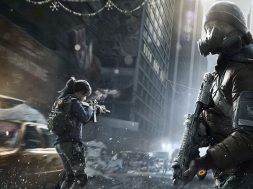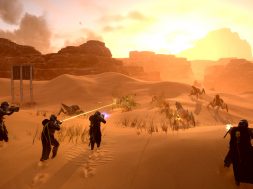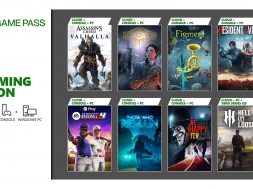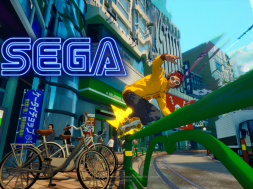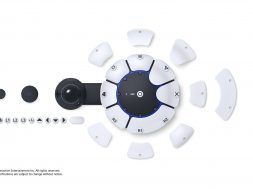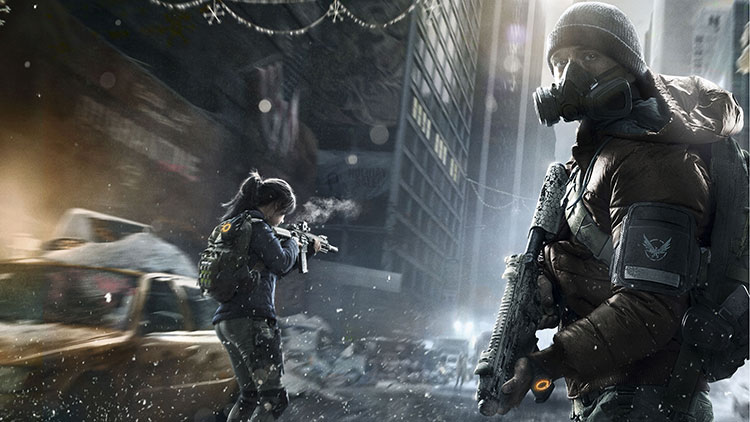
The Division has been a curious case these past few years. Announced in 2013 and developed by a studio only known for its solid real-time strategy games, Ubisoft’s entry into the online shooter was such an elusive game quite literally until its release. The pedigree of its developer was known in a different genre and this new game felt almost hidden away every time it was shown off at Ubisoft’s E3 press conference. These factors gave way to my own hesitance, if The Division was going to be anything but half-baked. Now that it’s actually out, how is it? Let’s take a look.

The setting takes place entirely in New York, where a viral outbreak of smallpox occurred after the disease was planted onto dollar bills and spread throughout the city on America’s busiest shopping day of the year, Black Friday. When order breaks down, the United States government calls upon sleeper agents of the Strategic Homeland Division to enter Manhattan and bring an end to the chaos caused by the gangs that now control parts of the city. Your character is part of the second wave sent in after the first fail to maintain their grip on the city.
There’s a great deal of conspiracy talk and parsing the motivations of characters surrounding the breakout. There’s also vast amounts of in-game lore to flesh out the cast but because these narrative strands are easily overlooked throughout the city, players may miss important context to put characters in clearer perspectives. If those character-specific pieces of intel were closer to mission areas or within them to begin with, the main story might feel less shallow. What’s stranger is though your character is at the center of every major plotpoint, their presence feels almost empty. They never speak and rely on other characters to rattle off exposition or connect the dots. For being part of an agency trained for the rebuilding of a collapsed society, their place in the world only serves as a window for the player than anything remotely tangible.
The main missions rarely differ from entering buildings, clearing enemies, pushing a button and clearing more bad guys but despite this The Division’s combat outshines a lot of the dreariness from the repetition. It plays like your standard third-person cover based shooter but the implementation of RPG elements compliments a fantastic moment to moment flow to encounters.
You can customise your loadout to fit a specific role such as a sniper that can heal from a distance or buff nearby allies, which was the playstyle I personally chose. The abilities at the player’s disposal allows them to inflict status effects onto enemies, reducing their accuracy or stunning them out of cover temporarily and that’s the sort of versatility The Division nails. It gives players enough tools to distinguish a better sense of roles among teams and that forms a more satisfying experience than other games in this genre that boil the combat down to shooting bullet sponges. It just so happens that the aforementioned pieces in The Division put together make shooting these sponges a far more engaging one.

Similar to Diablo or Borderlands, the gear progression in The Division follows your typical Skinner Box formula where players are awarded irregular loot drops as they progress. Randomized loot drops with variable statistics and bonuses are already a known quantity in these type of shoot n’ loot games.
Your base of operations serves as your hub for vendors and gear modification or crafting but with time and supply investment you rebuild the tech, security and medical wings which pertain to your various abilities, talents and perks. With every section rebuilt, you’ll be rewarded with new benefits such as items lasting longer in battle, mods for abilities or teams that collect consumables or crafting materials for you while you’re away. These smaller conveniences go a long way in making a fully operational base worth the investment. Unfortunately the side content necessary to begin said-investment lacks any variety. In the field, encounters will appear as missions that award points specific to one of the three mentioned wings. Every district you explore has many of the same type of missions with rescuing hostages, assaulting strongholds and protecting supply drops. The problem lies in that you’ll be doing the same objectives at the 40 hour mark as you were at 5.

The Division’s approach to PVP is the Dark Zone; an area devoid of civilians and outside communication, agents enter the desolate streets in search of high-tier gear. Since gear in this zone is contaminated, you have to extract it by chopper in specific locations accessible by other players. Where the PVP comes in is similar to that of Kane and Lynch’s “Fragile Alliance” mechanic; players can choose to turn on each other and go “rogue” at any moment. This has the benefit of being able to steal player loot off their corpses but then have to wait out a timer that resets every time you shoot another player. I was skeptical of the Dark Zone serving as a way for endgame players to progress after the beta but with the full game opening up a number of new areas and enemies to fight it seems like a more viable way to keep playing past the level cap than I expected. The anxiety of meeting other players is palpable and hunting rogue agents or escaping as one was exhilarating but the excitement can wear thin since there is little reason to visit the Dark Zone outside of earning better gear. Specific story missions or side content within that section of Manhattan could have been an interesting idea but the story never touches on what could have a more a compelling place for all kinds of players.
The endgame for The Division is overall shallow. Once you’ve hit the level cap, you earn what are called Phoenix Credits for completing dailies, killing bosses and killing players in the Dark Zone. With this new currency you can purchase the highest-tier of gear as well as blueprints to craft items with randomized statistics to attune them to your build. There are hints to item sets and the upcoming raid-like “incursions” that will come as a free update, but there won’t be anything else beyond that to keep players coming back until more content is released.

The Division was, if anything, a pleasant surprise. It doesn’t set the world on fire with its very Ubisoft-like structure of filling a map of things to do, but the combat (especially with friends) has a great momentum and versatility that I think stays enjoyable through the many hours of content it has, even if all of it isn’t amazing. It won’t enthrall people to play much past the ending but promises a lot more on the way after they’ve already played quite a lot and there’s something to that I think a lot of these “MMO-Lite” type of games miss. If you’ve got a group of friends interested I recommend it but if you feel like playing it lone-wolf, you may find it wanting.
